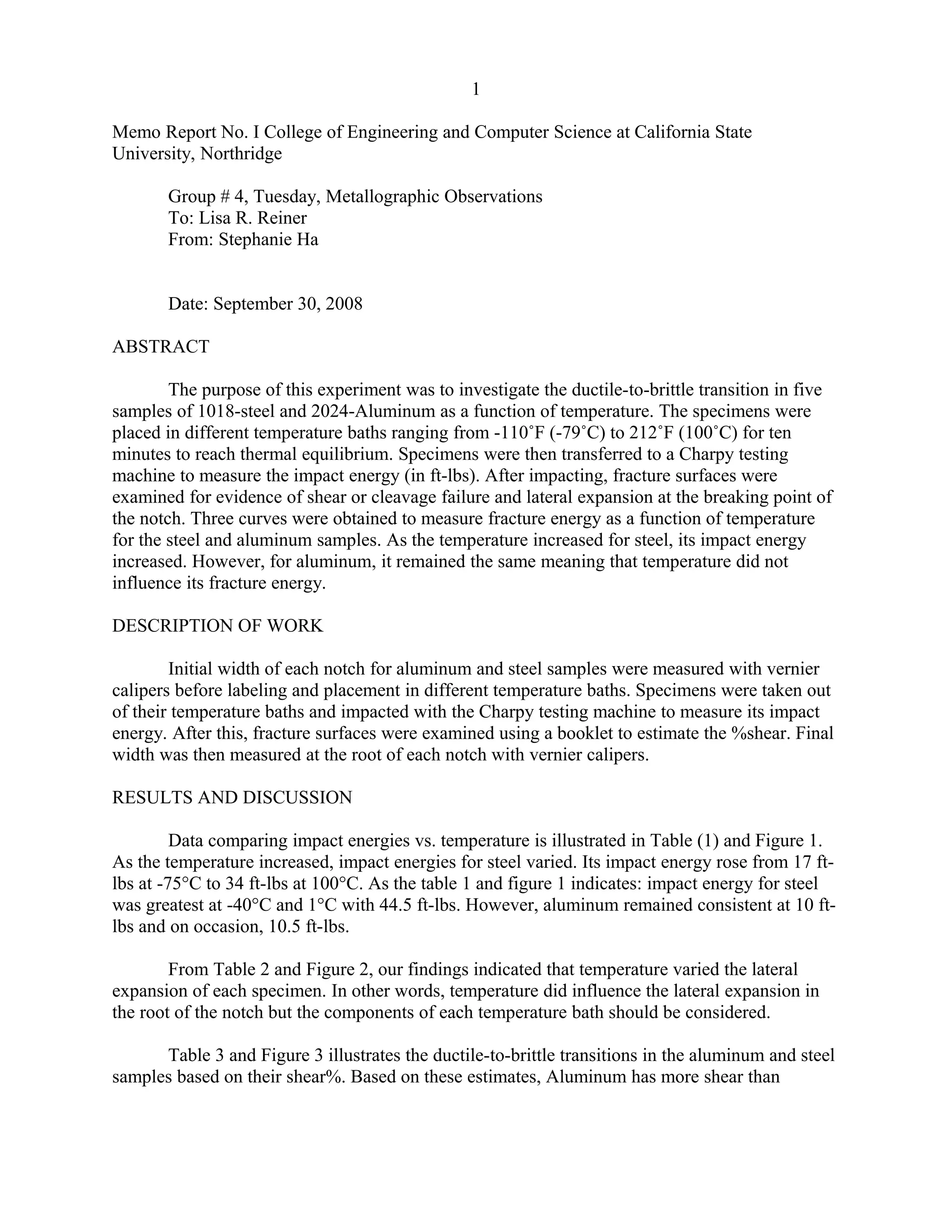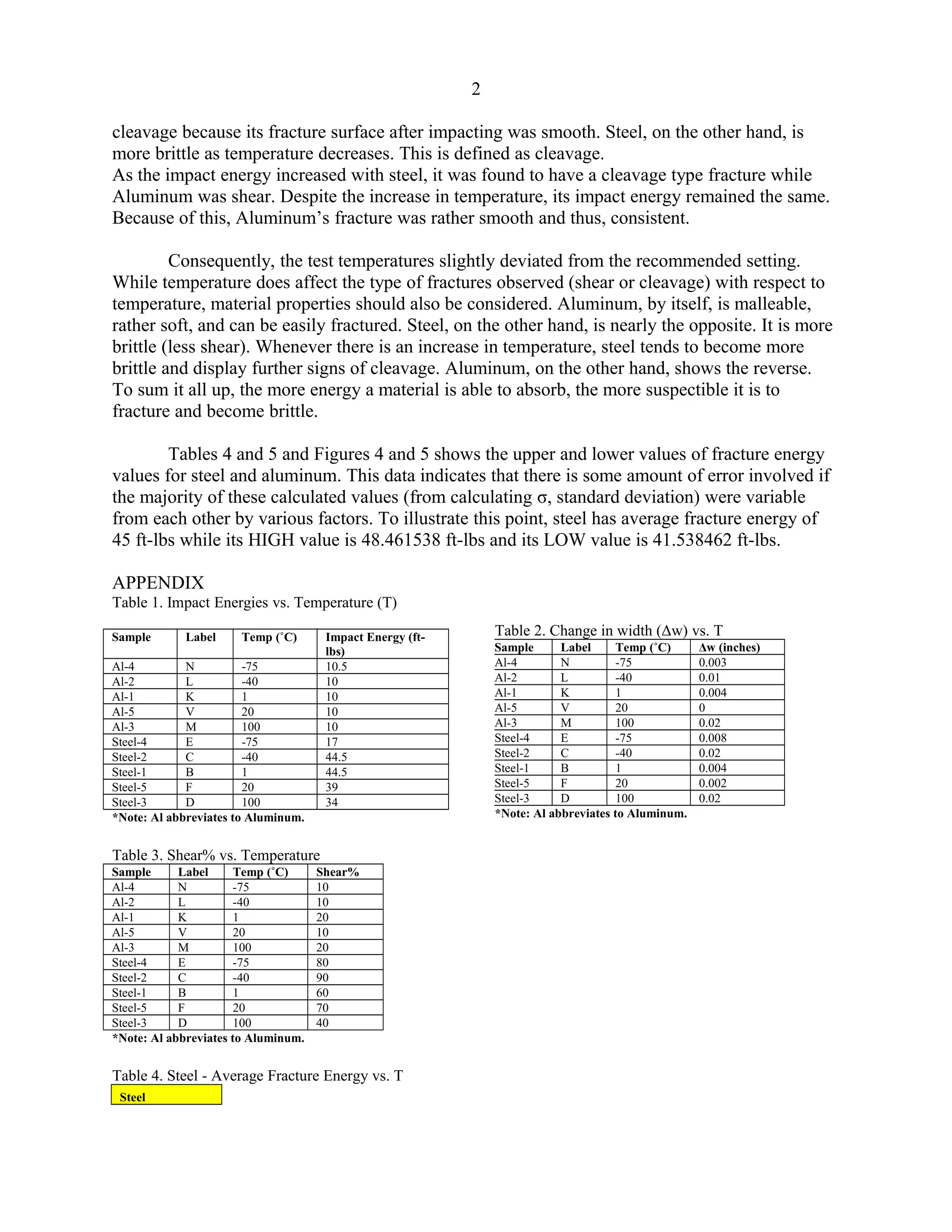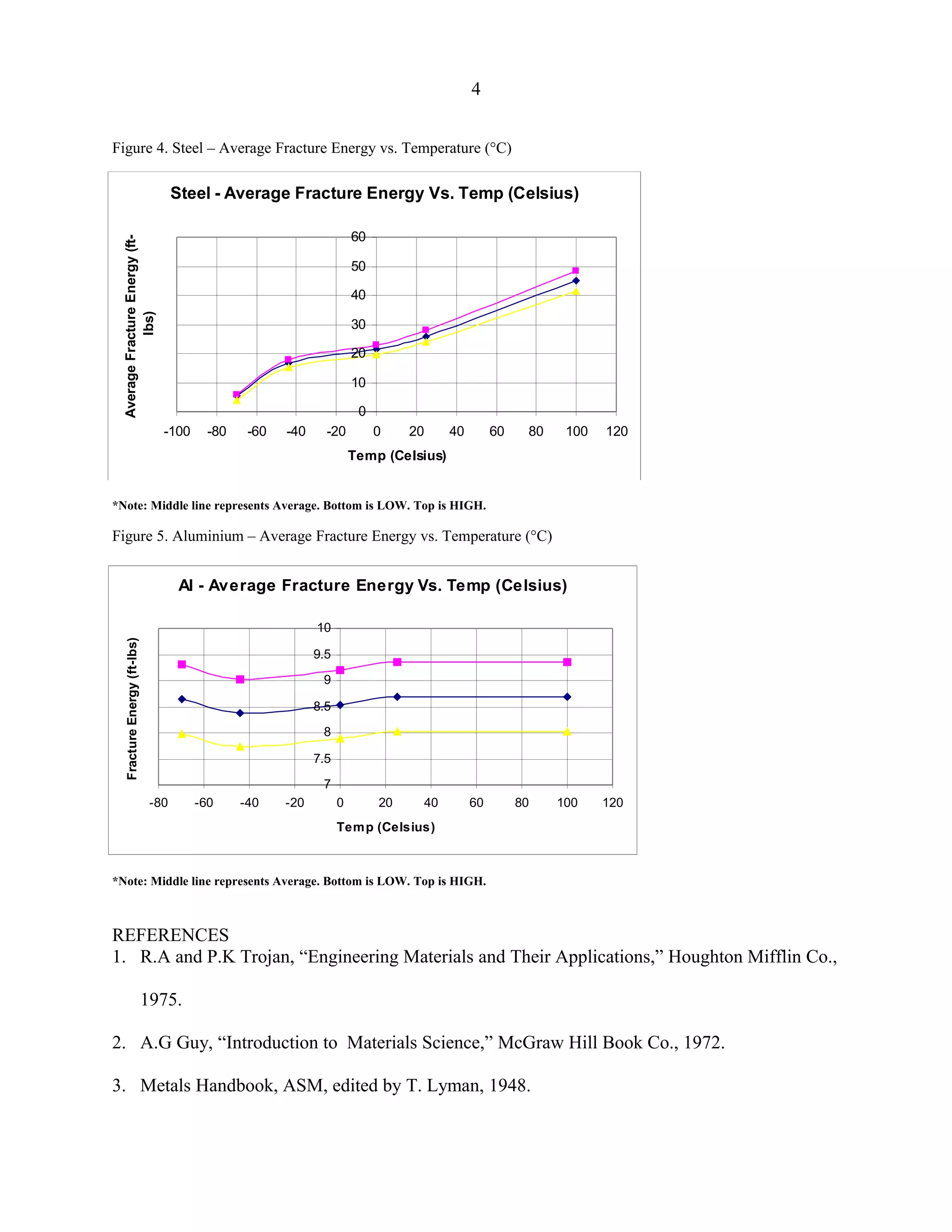The document summarizes an experiment investigating the ductile-to-brittle transition in steel and aluminum samples under varying temperatures. Steel samples exhibited increasing impact energy and more brittle fractures as temperature increased, while aluminum impact energy and ductile fractures remained constant regardless of temperature. Data tables and figures show the relationships between impact energy, lateral expansion, shear percentage, and temperature for each material. There was some variability in the fracture energy calculations between the samples.





